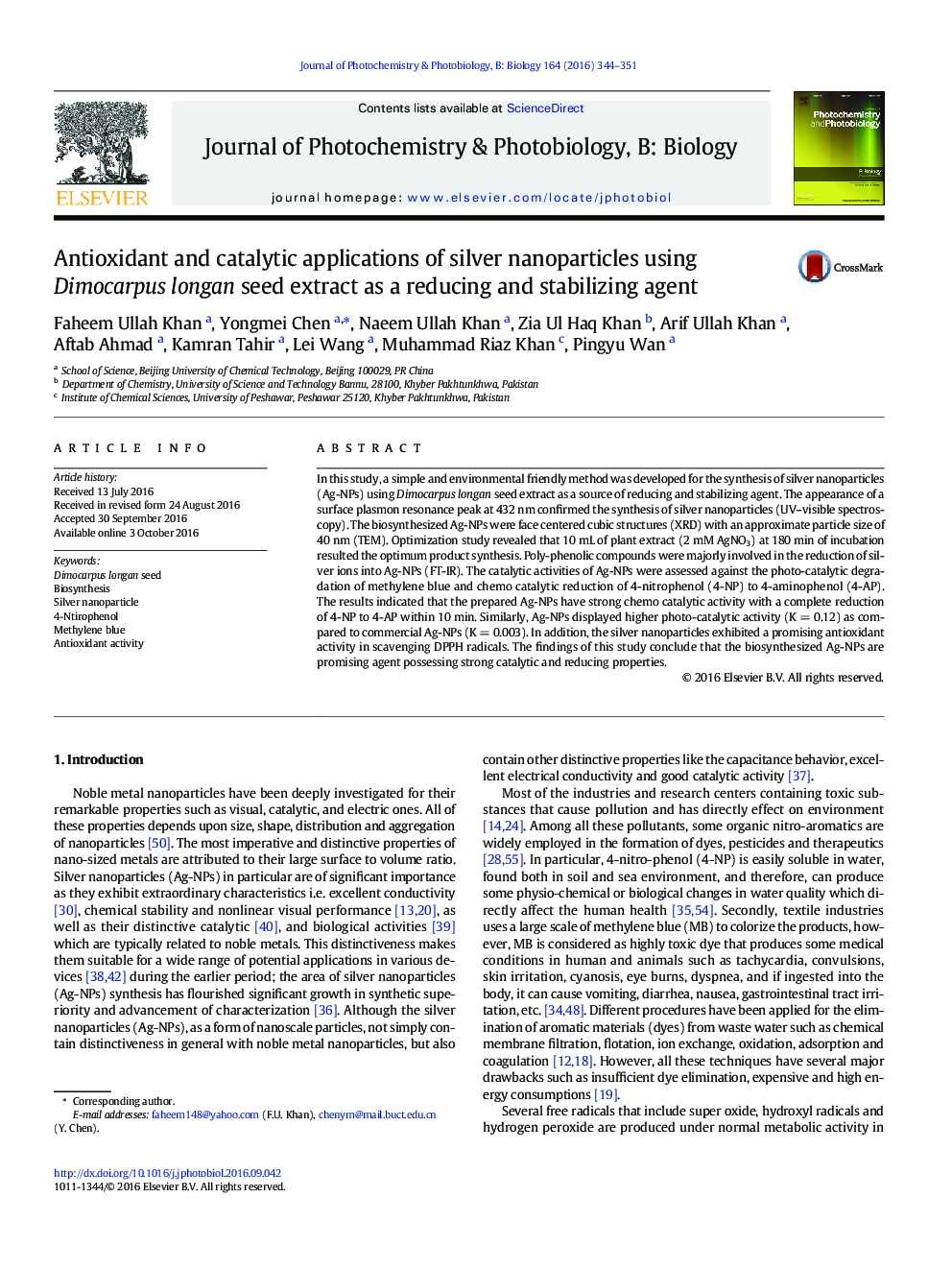| Article ID | Journal | Published Year | Pages | File Type |
|---|---|---|---|---|
| 4754634 | Journal of Photochemistry and Photobiology B: Biology | 2016 | 8 Pages |
â¢Biological synthesis of silver nanoparticlesâ¢Optimization of plant extract and time effecting AgNPs synthesisâ¢Photo and chemocatalytic activities of green nanosilverâ¢Antioxidant potency of the prepared AgNPs
In this study, a simple and environmental friendly method was developed for the synthesis of silver nanoparticles (Ag-NPs) using Dimocarpus longan seed extract as a source of reducing and stabilizing agent. The appearance of a surface plasmon resonance peak at 432Â nm confirmed the synthesis of silver nanoparticles (UV-visible spectroscopy). The biosynthesized Ag-NPs were face centered cubic structures (XRD) with an approximate particle size of 40Â nm (TEM). Optimization study revealed that 10Â mL of plant extract (2Â mM AgNO3) at 180Â min of incubation resulted the optimum product synthesis. Poly-phenolic compounds were majorly involved in the reduction of silver ions into Ag-NPs (FT-IR). The catalytic activities of Ag-NPs were assessed against the photo-catalytic degradation of methylene blue and chemo catalytic reduction of 4-nitrophenol (4-NP) to 4-aminophenol (4-AP). The results indicated that the prepared Ag-NPs have strong chemo catalytic activity with a complete reduction of 4-NP to 4-AP within 10Â min. Similarly, Ag-NPs displayed higher photo-catalytic activity (KÂ =Â 0.12) as compared to commercial Ag-NPs (KÂ =Â 0.003). In addition, the silver nanoparticles exhibited a promising antioxidant activity in scavenging DPPH radicals. The findings of this study conclude that the biosynthesized Ag-NPs are promising agent possessing strong catalytic and reducing properties.
